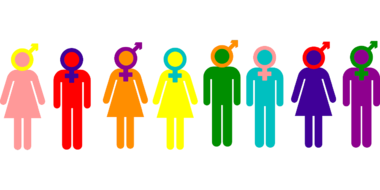LGBTQ+

iO Tillett Wright has photographed 2,000 people who consider themselves somewhere on the LGBTQ spectrum -- and asked many of them: Can you assign a percentage to how gay or straight you are? Most people, it turns out, consider themselves to exist in the gray areas of sexuality, not 100% gay or straight. Which presents a real problem when it comes to discrimination: Where do you draw the line?
I am going to say this is informative and entertaining. I took a course from librarian Jason Baumann in Spring 2009. It concerned services to special populations. He also curated exhibits for the 40th and 50th anniversaries of the 1969 Stonewall riots, which are considered a starting point for America's gay rights movement. (annelee)
Why does it matter?
In English, our most commonly used pronouns (he/she) specifically refer to a person’s gender. For queer, gender non-conforming, non-binary, and transgender people, these pronouns may not fit, can create discomfort, and can cause stress and anxiety.
A recent study showed that in transgender youth, using correct pronouns and names reduces depression and suicide risks.
Having trouble understanding why this would upset someone? Think about your pronoun (it’s probably “he” or “she”). Now imagine someone calling you the one you don’t think of yourself as. Imagine them doing it over and over and over, even after you’ve corrected them.
Queer culture is not a monolith, and neither is queer cinema. There are still many barriers left to breach, both in Hollywood and society at large. But the strides of the last half-century or so deserve to be celebrated. To that end, some LGBTQ+ cultural pioneers, and writers have assembled a list of the greatest gay films ever made.